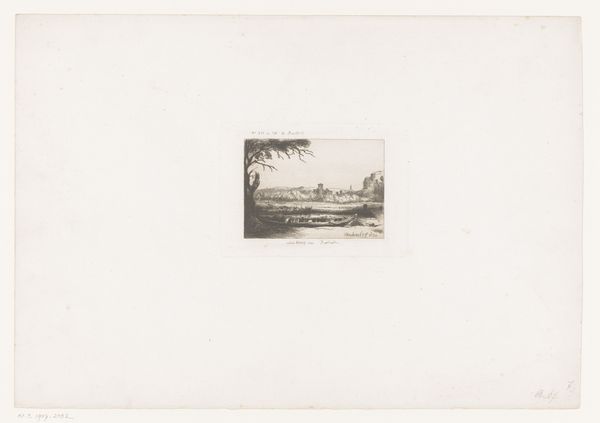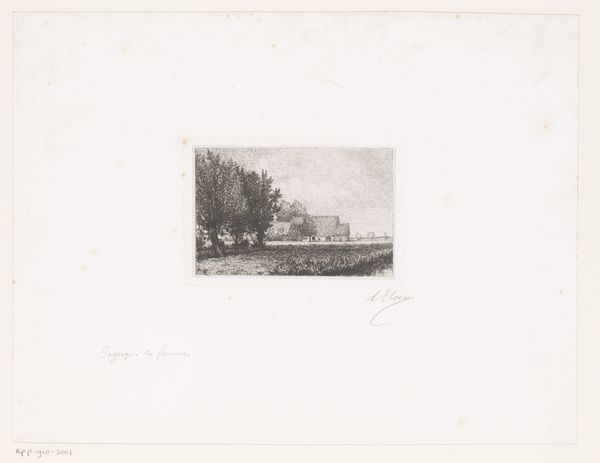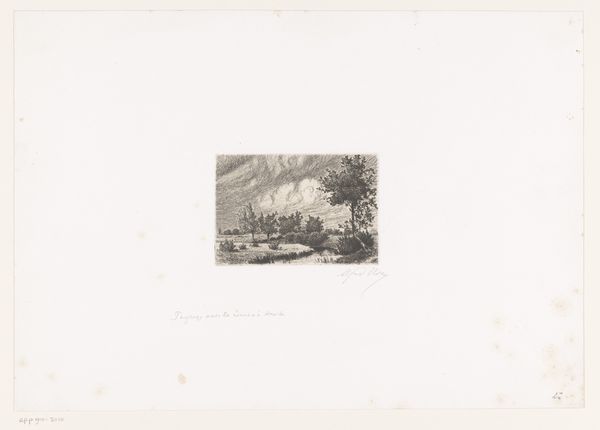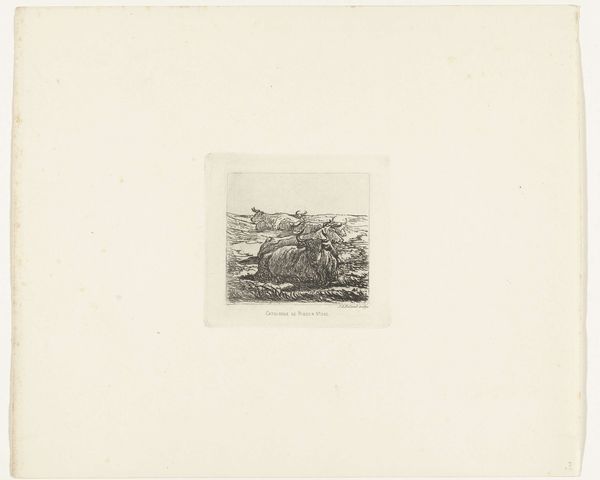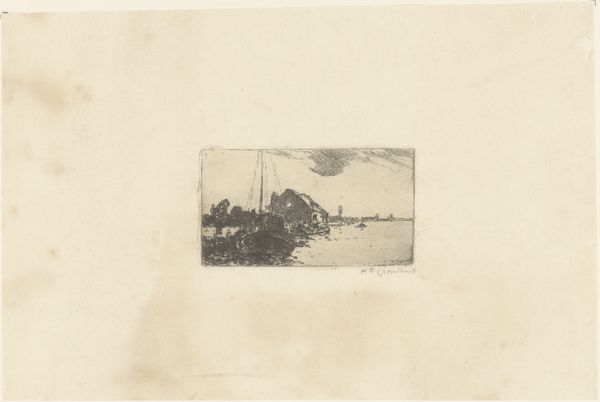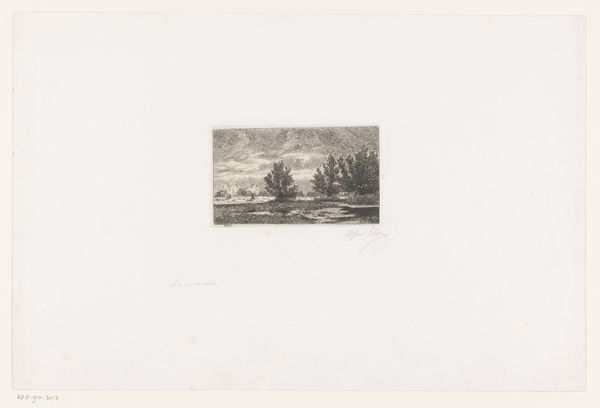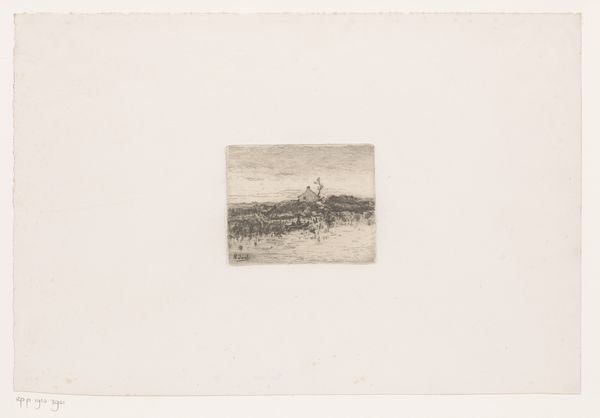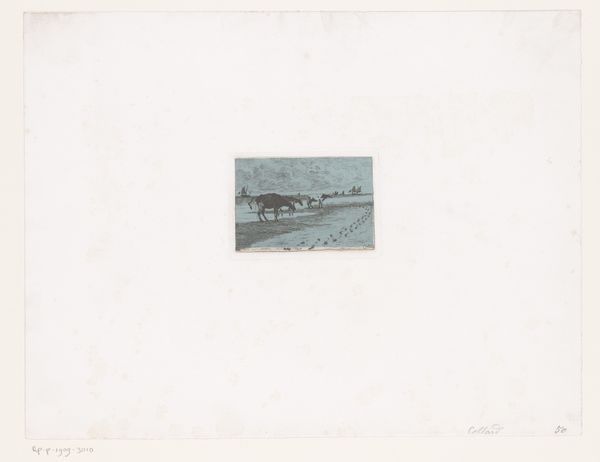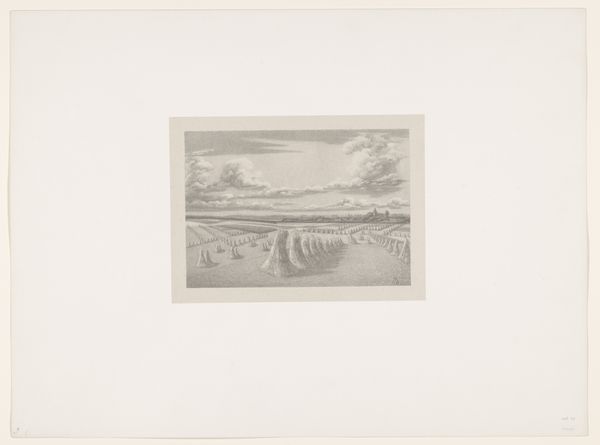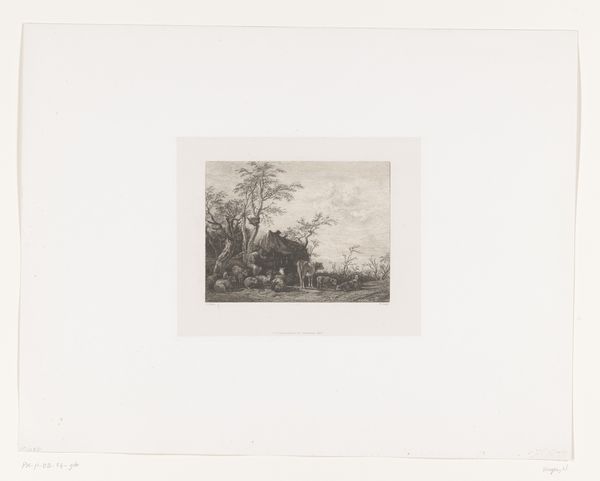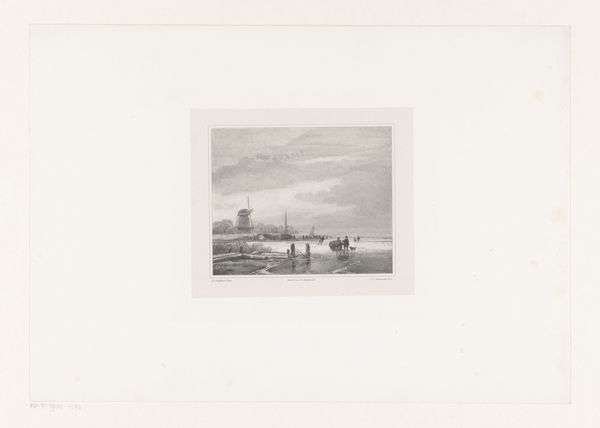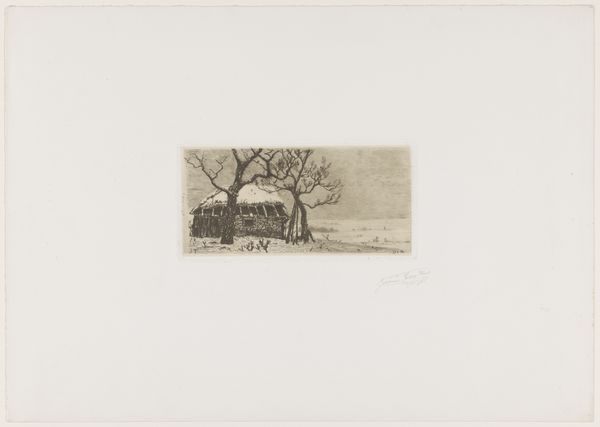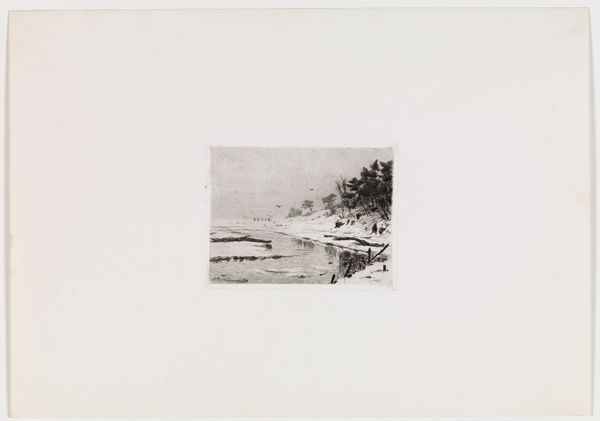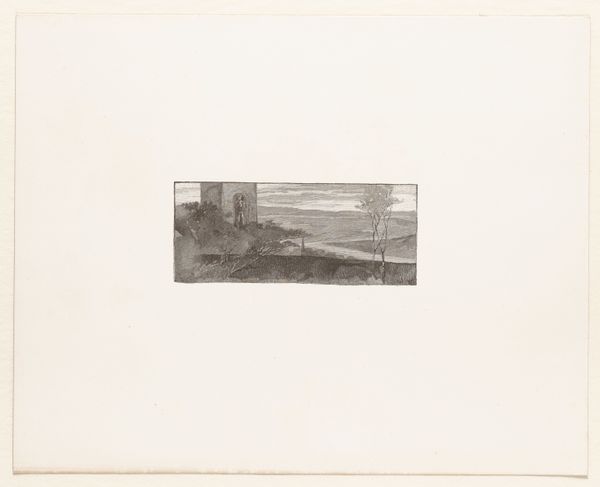
drawing, plein-air, paper, graphite
#
drawing
#
impressionism
#
plein-air
#
landscape
#
paper
#
graphite
Dimensions: height 80 mm, width 101 mm
Copyright: Rijks Museum: Open Domain
Curator: Here at the Rijksmuseum, we have “Landschap met waterplas,” or “Landscape with pool,” created sometime between 1860 and 1910. The artist utilized graphite on paper to bring this scene to life. Editor: My first impression is of quiet reflection. The subdued tones create a very intimate feeling. The limited use of materials creates a stark contrast between nature's grandeur and its humble representation. Curator: Indeed, this work, evocative of the Impressionist style and executed en plein air, transports us to a pivotal moment in the intersection of art and nature, wouldn't you say? What sociopolitical meanings can be read into depictions of land in the context of 19th-century European society, though? Who was entitled to land ownership? What statements can be made about identity through this ownership, or the denial of that ownership? Editor: That is an interesting angle, I concede that land ownership was, and perhaps remains, a political statement. And yet, the physical creation speaks so distinctly of working *with* the land, I think. To sketch "en plein air," means engagement with materials as one surveys the area for suitable landscapes, but also engagement with nature as one seeks the ideal spot. Here, graphite serves as the foundation, almost literally mined from the earth and carefully smudged onto paper. The scene depicted and the act of drawing seem intertwined, each relying on the other. Curator: But doesn’t the simplicity belie a more complex narrative? The very act of choosing this seemingly untouched landscape speaks to a particular vision, one that often excluded the working classes whose labor shaped the land. Landscape painting served to affirm social hierarchies, with nature acting as a screen onto which power relations are projected. This is where it becomes important to remember issues such as class, access, gender. Who can afford art lessons or trips out of the cities? Editor: Perhaps. But I am still compelled to wonder, does a simpler methodology inherently lend itself to the perspective of the everyman, whose labor is itself unrefined? I would also consider the availability of tools and resources. Who would possess them? Curator: I see how one can think about the artist's means as speaking to or for specific classes, but perhaps there is more to unearth regarding its use of naturalistic imagery for constructing idyllic scenes that further normalized unequal relations between human beings. This becomes vital when analyzing art within a broad framework centered on the politics of landscape, gendered artistic expression, and labor dynamics prevalent during its creation. Editor: True, its seeming simplicity has opened up much broader discussion than perhaps first apparent! For me, it's been interesting to trace how artistic output is never simply "of the Earth," as much as the Earth itself can be political.
Comments
No comments
Be the first to comment and join the conversation on the ultimate creative platform.
